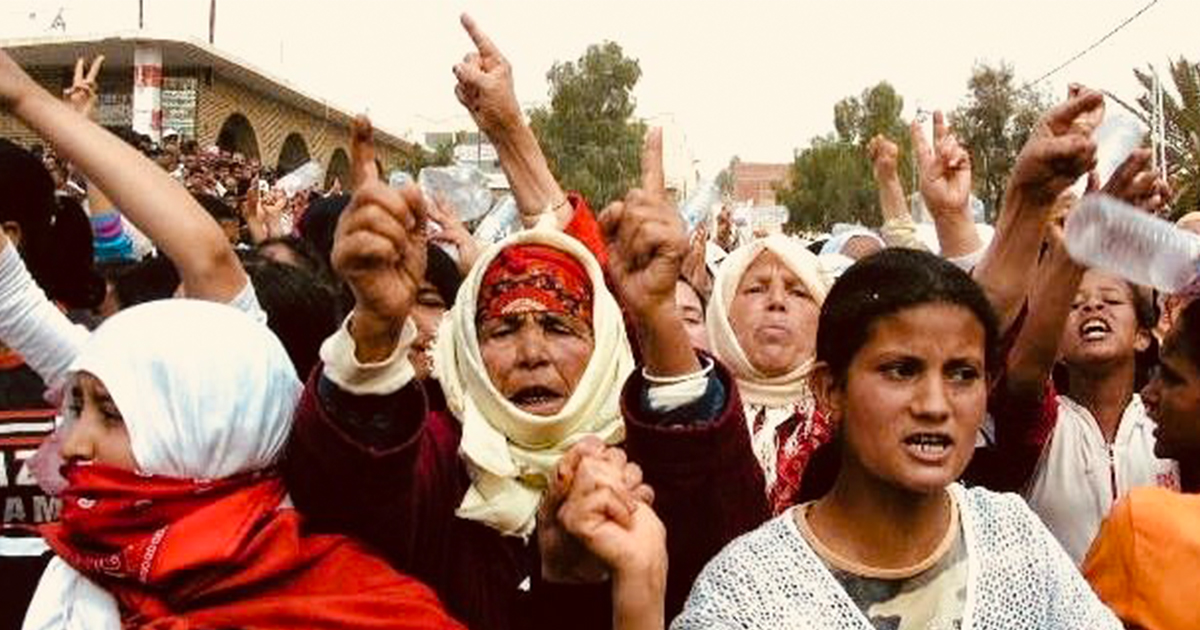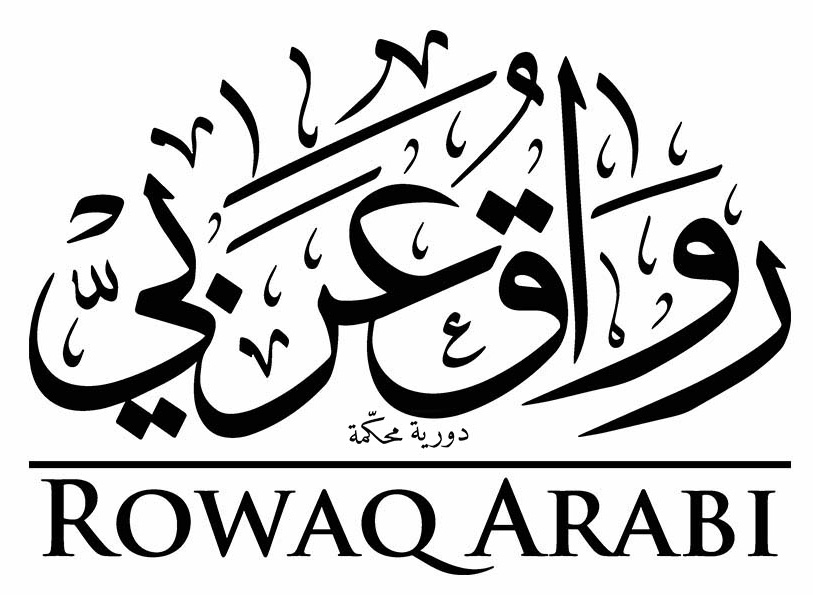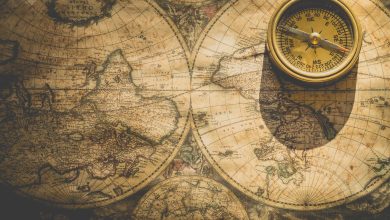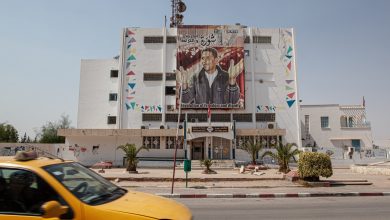Views: New Social Movements in Arab North Africa, Protest Actions but no Political Project

Beginnings
The new social movements witnessed in the wider Arab North Africa (Maghreb) arose from community initiatives unaffiliated with political parties or any particular ideology. The breadth of these movements and their innovative strategies of resistance certainly surprised governing regimes confident that lasting stability was guaranteed by not only the regimes’ reliance on security approaches and control of public life, but also by the discord and frailty characterizing elites in political, advocacy, and trade-union circles; riven by internal conflicts and straining under the government crackdown on their activities. I believe that groups associated with the labor and rights movements in the Maghreb region have bridged this gap through their involvement in global social forums. These forums act as a meeting point for social movements and movements opposed to neoliberal globalization. The forums have also enabled these groups to understand and adapt to these new social movements, and establish networks with them.
The new social movements have created a different understanding of politics and set a new dynamic, one that is no longer limited to highly experienced party leaders with revolutionary ideologies and a deeply ingrained political culture. These movements have democratized and expanded politics by focusing on citizens’ everyday concerns. Their leadership includes people with no prior political experience and no designs on power. These movements have spread despite regime crackdowns, in part due to their capacity to take advantage of new communication methods, which give them the opportunity to learn of other experiences within Arab North Africa and beyond.
It is believed that social movements in the Arab region are an extension of global social movements, which became more active as the role of leftist parties and global unions faded under the sway of neoliberal globalization seeking to free the economy from any regulation. As a response to the inaction of parties and trade unions, the World Social Forum (WSF) was created, holding its first meeting in Brazil in 2001.[1]
The forum was established in opposition to the World Economic Forum, which meets annually in Davos, and to economic globalization policies and their destructive economic, social, cultural, and environmental effects on peoples worldwide. Two currents have dominated the WSF, which has met annually since the first conference in Porto Alegre. The first consists of organized movements such as trade unions that have rebelled against their leaders’ compromises with power, advocacy organizations, feminist movements, minorities, and environmental groups. The second is composed of social movements that have little use for political theorizing and believe in direct action, like the 1999 protests in Seattle against the World Trade Organization that disrupted the conference, the Occupy Wall Street protests of September 2011, and the Indignados movement in Spain in May 2011.
The activities of the WSF resonated in the Maghreb. The preparatory meeting of the Maghreb Social Forum was held in Bouznika, Morocco in 2006; the concluding statement of the preparatory session – attended by trade unionists, rights defenders, and feminist and youth groups from around the Maghreb – announced the establishment of the forum to inaugurate “a distinctive space for the meeting of social movements.” In 2006, on the sidelines of social and labor movement meetings, the Maghreb Coordinating Body for Human Rights was formed with twelve rights organizations from several North African countries. The group was established to protect human rights “in their universality” and establish close ties with “all Maghreb democratic organizations making up civil society.”[2]
The Maghreb Social Forum came into being for several reasons; first and foremost, the growing social movements in Arab North Africa, particularly in Morocco and Tunisia. These two countries were more afflicted by the global economic crisis and had both seen a marked evolution in the trade union and rights movements, which in turn created some space for action in both countries. In contrast, Algeria was little affected by the global economic crisis, as it lacked any financial market to speak of and its national economy was less open to the global economy. Substantial oil revenues also allowed the country to increase flows into the public treasury during the first half of 2008.[3]
From the mining basin in Tunisia to Sidi Ifni in Morocco: Turning against regimes
Most social movements developed outside a formal labor and advocacy framework and brought in ordinary citizens, as was the case in the uprising in the mining basin in southern Tunisia in 2008 and in Sidi Ifni, Morocco the same year. Even trade unionists involved in the mining basin struggle joined the protests as individuals—that is, apart from organized, conventional trade union circles. Under pressure, the Tunisian General Labor Union (known by its French acronym, UGTT) even stripped some union activists of their membership. The UGTT later rescinded its decision following intense media coverage and popular sympathy for the uprising.
The confluence of the two uprisings, in Sidi Ifni and in the mining basin, indicated important changes underway in North African societies. As these popular protest movements slowly broke down public fear of government reprisals and unmasked the lie behind regime pronouncements about economic growth and miracles, they surprised not only the regimes in power, but opposition political parties as well. These parties had little influence due to suppression or declining popular reach, the lack of democratic space for action, multiple internal conflicts, and the lack of alternatives.
Algeria: Lack of an organizational framework for social movements
Since the 1980s, Algeria has witnessed the eruption of spontaneous social movements channeling the anger and disaffection of marginalized youth, particularly from poor areas. However, these movements did not develop into organized movements capable of disrupting power and forcing significant social and political concessions. For example, the uprising of January 5, 2011 had no clear demands and was undermined by acts of violence and vandalism; partly because political organizations and parties “stood by watching the uprising, going no further than to voice modest support for the legitimate reasons that spurred the youth to take to the streets”[4] and partly because it was unable to produce field leadership capable of directing actions.
The rights movement corrects course
Although the rights movement in Morocco supported the social actions by decrying the government crackdown and releasing statements and reports on the events and abuses by security forces, the Tunisian rights movement played a more significant role in the mining basin movement. In the years leading up to the uprising, the Tunisian rights movement stressed the importance of economic and social rights within advocacy and promoted links between the labor and rights movements.
This closeness did not extend to the leadership of either the Tunisian Human Rights League (LTDH) or the UGTT, but within both organizations there was some resistance to the conventional separation of economic from civil rights (traditionally the defense of economic rights fell to organized labor while the defense of civil rights was the province of the LTDH). As a result, some spaces for joint action were formed and both organizations provided support for social actions (the student strikes of 2005, sit-ins by female textile works with little union presence in 2003, and the creation of regional labor-rights committees to support the dismissed Judges Association and lawyers in 2005). All of this helped to forge a labor-rights front that would play an important role, not only in the mining basin uprising but also in the events that would culminate in the uprising of December 17, 2010.
The National Committee to Support Mining Basin Residents[5] was a model of joint action between trade unionists and rights defenders. The committee was composed of more than twenty rights advocates, including lawyers and trade unionists active in the defense of civil liberties as well as a group of trade unionists close to civil rights advocacy.
The primary tasks of the committee were to break the media embargo on the uprising and then on the detainees and their families, assist the families by finding lawyers to volunteer for their defense, monitor trial irregularities, and expose cases of torture and forced confessions. The committee also invited observers from North Africa and Europe to attend the trials and witness the lack of due process. Committee members visited unions in foreign countries seeking aid, and outreach seminars were held in regional UGTT branches and in trade union universities. The committee also played an important role in bringing together labor and advocacy circles. It helped create local and regional committees in support of the mining basin (in Jendouba, Tunis, Kairouan, and Ben Arous), and it used its sway in the UGTT to pressure the union’s leadership to disassociate itself from the authorities.
The mining basin uprising brought together three different groups of actors who would play an important role in the revolution of December 17, 2010: trade unionists who had escaped the control of the UGTT leadership, rights defenders who shifted course to focus on social issues, and lawyers who became involved in social struggle. The reverberations of the uprising were important not only in Tunisia, but across North Africa and in Europe as well, where activists in exile played a vital role in mobilizing support outside Tunisia.[6]
Lessons from the early North African uprisings
The movements in the Tunisian mining basin and Sidi Ifni were important for their immediate local significance, and for standing against the regime’s choices and rejecting its fait accompli policies. However, they did not long persist in the face of the authorities’ violence and vicious crackdown, which led to dozens of deaths and injuries. Nevertheless, both uprisings achieved positive outcomes. They chipped away at the authorities’ legitimacy and made significant cracks in the barrier of fear—a tool used by dictatorships to maintain social peace. They also opened up the possibility of future rebellions. Most importantly, both movements helped to bridge the gap between the rights and union movement on one hand, and local social movements on the other.
The rights movement and social movements: macro-rights and micro-rights
Professor Mohamed Outaher, a Moroccan researcher in religious sociology and anthropology, believes that uprisings across the Arab region played a major role in changing the structure of the rights movement in Morocco. As he explains, under the influence of the Arab revolutions, the movement moved away from macro-rights, with an emphasis on legalism and structures, toward micro-rights, which are of immediate interest to ordinary citizens and their concerns. In turn, this helped to expand rights-oriented civil society.[7]
This seems perfectly reasonable considering the outsized impact of the Arab uprisings, the attempts to repeat them in most countries in the region, and the growing concern with economic and social rights. However, the linkages between the rights movement and social movements in the region began years earlier. Numerous North African meetings brought together the three main parties: social movements, trade unions, and human rights organizations. The Maghreb Social Forum in July 2008 was only the first in a series of joint meetings held as part of the Maghreb Coordinating Body for Human Rights. The forum convened in El Jedida, Morocco with more than 2,000 participants, specifically in support of “the protests in Sidi Ifni, the uprising in the mining basin, and the strikers in Algeria.”
Social ferment and the absence of an alternative political project[8]
Social movements brought important changes to the structure of power and its political, media, and security apparatuses, allowing ordinary citizens to liberate the public sphere. They also helped to build transnational links between social movements (some of them institutional labor movements and some informal) and the rights movement, as seen in joint meetings in new North African forums. These meetings became more frequent as protest movements gained steam and some of them spread beyond the local scene to encompass the entire Maghreb between 2008 and 2010.
Many analysts believe the eruption of Arab revolutions were a response to the urgent need for change in a region that had seen unparalleled despotism. Palestinian writer Sameer Zapen thinks they were late in coming, given the long tattered state of Arab regimes, and that they were a product of social movements led by marginalized youth without any alternative political project save for protesting the regime. In other words, the revolutions lay outside the traditional partisan framework, for serious opposition parties “had been castrated by suppression”[9] by despotic regimes.
Yet as soon the regime fell, as it did in Tunisia, the marginalized youth—the engine of the revolution—exited the political scene, leaving it vulnerable to the re-production of old regime methods. Young people then returned to public spaces to stand up to the revived machinery of oppression.[10]
Social movements and the Arab Spring
Social protest movements contributed to sparking the Arab Spring, and their integration with the labor and rights movement helped in the organization of various actions from marches to strikes to sit-ins, and in the articulation of slogans calling for freedom and social justice, which resonated with peoples ground down by poverty, hunger, and unemployment. Momentum had been gaining in the Maghreb since the beginning of the century, culminating in the revolution in Tunisia. In Algeria, however, the authorities offered only a few social concessions and permitted some political parties to operate, considered by some as a “persuasive bribe.” In Morocco, the 2011 constitution was adopted, which made the irrevocable choice for a democratic state ruled by truth and justice.
Yet revolutionary zeal had barely faded before social movements again began demanding marginalized groups’ rights to development, employment, and infrastructure. This was because the ruling parties had failed on two fronts: first, they failed to change the socioeconomic policies targeted by the protests that rocked the region, and second, they failed to attract the angry youth who had lost hope of improving their situation through political action, so they returned to the streets.
Most importantly, in recent years, these social movements have reverted to their local origins, perhaps because of the loss of hope at the possibility of collective change. Currently, they do not extend beyond the area in which they arise, and they employ the same methods used prior to the Arab Spring: sit-ins, strikes, cutting roads, and occasionally mass suicide attempts (for example, 25 young people holding a sit-in for jobs in Kasserine attempted a mass suicide[11]). This time, the movements have not spread beyond their immediate environment, as seen with older protests in Sidi Bouzid in 2010 or Rabat in 2011. These social movements have remained in place, voicing local demands, without any real backing, save for some limited support in the form of statements and reports from civil society organizations.
From the Rif to Tataouine to Ghardaia: intersection with the Arab Spring
The Rif movement in northern Morocco has now persisted for two years. Opinions differ about the drivers of the movement. Some connect it to the historical rebellion of Abd el-Krim Khattabi and the uprising he led in the area against the post-independence Moroccan state (1958–59). Others see it as an outcome of regional political elites’ incapacity, including the failed government attempt to make Hoceima a beacon of the Mediterranean, despite the allocation of substantial funds. Certainly, the area suffers from chronic social problems such as high youth unemployment, degraded infrastructure, and a lack of social services.
The movement has clearly drawn inspiration from the tools of the Arab Spring. Yet it has remained a local phenomenon despite its persistence, and has not expanded beyond the Rif provinces. It does have similarities with protests elsewhere in North Africa, such as in Tataouine in southern Tunisia and Kasserine in western central Tunisia (2016), as well as in Ourgla in southern Algeria and Ghardaia (2014).
All of these protests are local and peaceful in nature, and they reject any politicization. They have given rise to new leaderships in the field, cementing a kind of direct democracy, and they make clear demands. This raises questions about the efficacy of political parties (ruling and opposition) and rights organizations, their current influence on public life, and their ability to articulate alternatives.
Features of protest movements after the Arab Spring
The absence of a traditional organizational and political framework has led Asef Bayat, a sociology professor at the University of Illinois, to dub these post-Arab Spring actions “social non-movements” due to their lack of organization, their spontaneity, and their non-ideological nature. They have no organizational leadership, but are instead led by ordinary people not versed in political thought who prefer direct action to theorizing. In contrast, social movements in Western societies are “organized and sustained.”[12]
Yet although these movements lack the traditional organizational form and are distinct in some way, they do not wholly lack any organizational framework and are not so spontaneous that people act without any coordination. The residents of the Rif, who have sustained their action for two consecutive years, are highly organized and have the tactical capacity for response. As was true in the mining basin, the movement has produced new leaders capable of facilitating action, speaking in the movement’s name, and at times setting its course, and these leaders have become symbols and won the trust of those around them.
The new social movements arose in a context in which the influence of old structural frameworks—political parties and civil society—had receded. These structures could not evolve as necessary and change their conventional vision of action even though the context had changed. The new movements are also pragmatic reform movements that at times reject the logic of old bureaucratic structures. Believing that the complexities of these structures and their conflicts and divisions at times have a negative impact on their urgent claims, these movements believe in direct action in the field as a method. They have defined their reformist claims and invented methods to bring them to the authorities.
Challenges facing civil society
Civil society organizations play an important role in supporting local social movements. They make solidarity visits in the field, document testimonies, shine a light on security and judicial abuses, and sometimes provide pro bono defense counsel and bring in observers to document violations of due process. Some organizations may seek to mediate between the authorities and the protestors to avoid inflaming the situation, as was the case in the Moroccan Rif in 2017 or with the UGTT and protestors in Kamour in southern Tunisia in 2016.
Nevertheless, civil society organizations have not managed to establish durable ties with protest movements because the latter realize that civil society has only limited influence with the decision-making authorities. In addition, the relationship is bound up with the duration of the protests: when the protest ends—whether through resolution as in Tunisia occasionally or by suppression of the protests as in the Rif—the links between the two parties are weakened.
The Tunisian Forum for Economic and Social Rights has attempted to bring together social movements in annual conferences with the goal of establishing networks and linkages between them and rights organizations, and the attempt has met with some success. The first national conference, convened on March 27, 2017, produced important recommendations for strengthening coordination and consultation between social movements and labor and rights organizations in order to “support these movements” and “continue action to achieve the goals of the revolution,” seen as a vital national task. The National Coordinating Body for Social Movements has also played a role in media, coordination, and networking. Yet the task ahead remains difficult since each social movement has its own particular demands, from jobs to development to permanent employment contracts. It is therefore difficult to find the common thread between them, which hinders potential mutual solidarity.
[1] World Social Forum – Global Policy Forum.
[2] See the Arabic Network for Human Rights Information, Mar. 30, 2006.
[3] See Talib Dalila, Ayad Sidi Mohammed, and Harani Karim, “al-Azma al-Maliya al-Rahina wa Atharuha ‘ala al-Iqtisad al-Jaza’iri,”
[4] al-Ayashi Unsur, “al-Harakat al-Ihtijajiya fi-l-Jaza’ir (2-2),” Jazeera Net, Feb. 11, 2011,
[5] Formed on March 20, 2008, its members included lawyers like Chokri Belaid and Abd al-Sittar Ben Moussa, trade unionists like al-Nasser al-Ajeili and al-Hadi Ben Ramadan, feminist activists like Souhayr Belhassen, Khadija Sherif, and Ahlam Belhaj, and members of the LTDH like Abd al-Rahman al-Hudhayli.
[6] Exiled activists played a major role in supporting the mining basin movements, which severely troubled the authorities. Mouhieddine Cherbib, the head of the Committee for the Respect of Freedoms and Human Rights in Tunisia, who lived in France, was prosecuted with the uprising leaders and sentenced to two years in prison for participating in founding Wefaq, which the authorities alleged was a gang formed to attack people and property.
[7] Mohamed Outaher, “The Human Rights Movement in Morocco: the Dialectic of Influence,” Arab Reform Initiative, Jul. 2018.
[8] “In general, social movements do not seek to dominate power, and they have no ideology or alternative political, economic, and social program. They are based on immediate reform demands and concern a region, body, or sector and typically fade when these claims or some of them are met.”
[9] Sameer Zapen, “al-Thawrat al-Arabiya wa-l-Ihtilal al-Fada’ al-‘Amm,” al-Arabi al-Jadid, Jun. 3, 2016.
[10] Ibid.
[11] “Qasrayn: Muhawalat Intihar Jama‘iya li-25 Shaban min al-Mu‘tasimin bi-Maqarr Wilayat al-Qasrayn,” al-Sharia al-Magharibi, Oct. 20, 2016.
[12] Asef Bayat, Life As Politics: How Ordinary People Change the Middle East (Stanford University Press: 2013).
Read this post in: العربية





